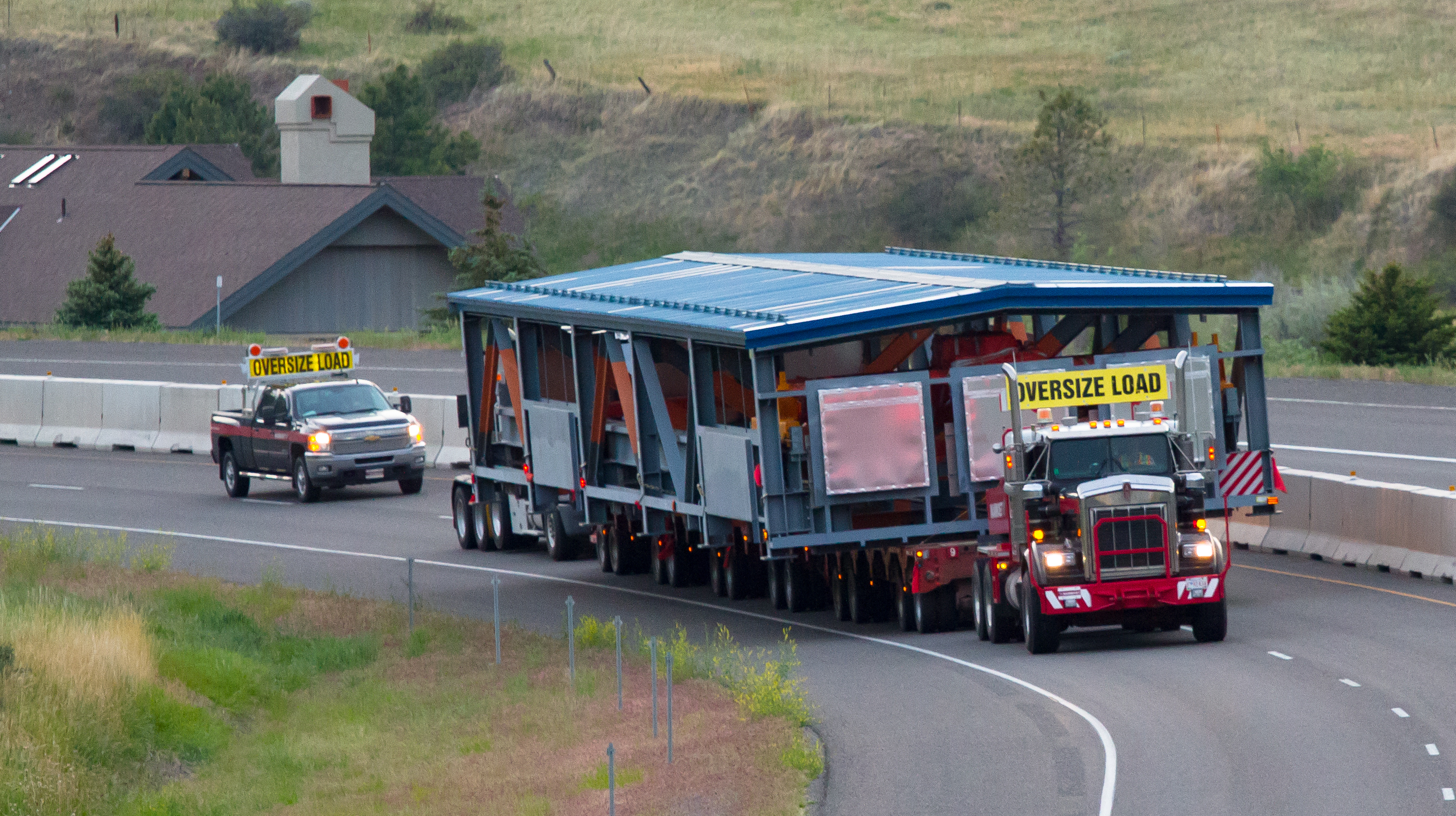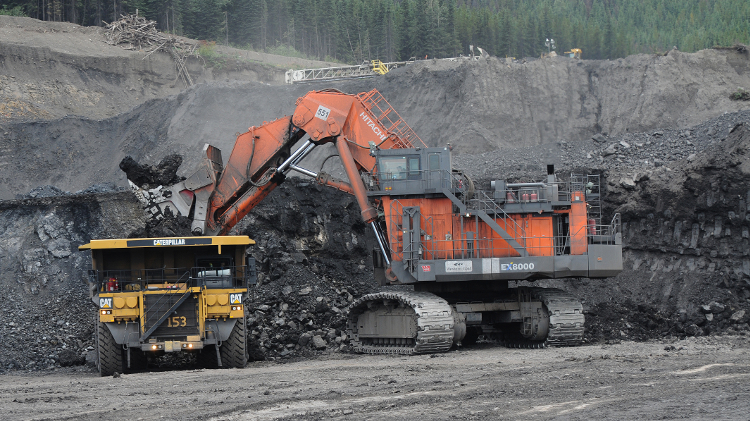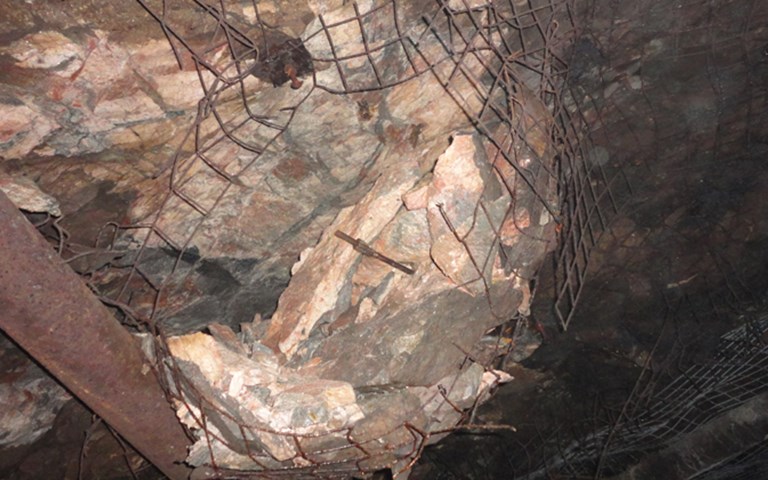The effects of corrosion on underground support systems has not been well understood until now. Courtesy of John Hadjigeorgiou
When support systems at underground mines start to experience corrosion, they begin a process of degradation that, depending on a mine’s environment, can span years or can happen breathtakingly quickly. With enough corrosion-instigated degradation, the support systems lose their ability to do their job, which results in falls of ground that can have disastrous economic and safety consequences for the mines.
“You’re losing access to the excavation, so you have to go back and install support again,” said John Hadjigeorgiou, a University of Toronto professor and the Pierre Lassonde Chair in Mining Engineering. “You’re losing money due to installing support, but also due to loss of production.” Falls of ground, he added, can also put workers in danger.
Hadjigeorgiou has studied the effects of corrosion on underground reinforcement and support systems for more than 15 years, often being called in after sites experience falls of ground to help miners determine what went wrong. “Over the years what I became interested in was trying to be more proactive, trying to understand the fundamentals of corrosion and how we can mitigate it,” he said.
His most recent publication in CIM Journal (Vol.6, No.3) was co-authored by Jean-Francois Dorion, formerly a PhD candidate at Université Laval and now chief engineer at Nyrstar’s Langlois mine, and Edward Ghali, a professor at Université Laval. They revealed the results of five years of research at seven underground mines in Canada. The study gives greater insight into the loss of capacity in underground support systems due to corrosion, building on Hadjigeorgiou’s previous published work, and the resulting guidelines have been adopted at several mine sites.
Corrosion in mine sites is born out of the surrounding environment, with warmer temperatures, humidity, water, acidity, conductivity and the presence of different minerals in the ore body all playing a role. Atmospheric and aqueous corrosivity varies between sites and even between two points at the same site. An underground mine’s corrosivity ultimately affects how long support systems can safely operate before they begin to degrade or, worse, fail.
Sites can experience two types of corrosion: uniform, which the study focused on, or non-uniform (also known as localized). Both, Hadjigeorgiou said, can be equally problematic. A support system experiencing uniform corrosion will see the same level of corrosion across its surface. Localized corrosion is contained to specific areas, and often looks like pitting.
Filling a void
Corrosion itself is a widely studied topic, but its effect on hard rock mining support systems is not a well-covered area. According to Hadjigeorgiou’s study, there have been efforts made in the past to develop classification systems to determine how susceptible to corrosion an environment is, but “for a variety of reasons, these classification systems have not gained widespread acceptance.”
Hadjigeorgiou and his collaborators are attempting to fill the void. The long-term objectives of their research are to have enough data and understanding to allow miners to choose better support strategies at their sites and to create a reliable assessment of the expected life of support systems.
The research was conducted at the LaRonde, Mouska, Doyon-Westwood, Niobec, Persévérance and Géant-Dormant mines as well as through laboratory work. Corrosion coupons – small metal sheets – were installed at locations throughout the participating sites and checked at three-, six- and 12-month intervals to analyze the level of corrosion and test for any loss in capacity. The co-authors also tested mesh and bolts.
The results of the coupon tests showed a “strong negative linear relationship” between a coupon’s tensile strength and the uniform corrosion rate: as the coupons spent more time exposed to a corrosive environment, their strength notably decreased. This finding expanded on Hadjigeorgiou, Dorion and Ghali’s previous research, and further cemented the link between corrosion and support system capacity. While the results seem common-sense, sites still struggle to determine the length of time their reinforcements will last and whether it is worth the extra cost to install more corrosion-resistant support.
The study also addressed the efficacy of galvanization and special coatings as corrosion deterrents, finding that galvanized coupons were “consistently more resistant to corrosion” after 12 months of underground exposure.
John Henning, Goldcorp’s director of geotechnical engineering, said he has seen the benefits of galvanized coatings at the company’s Red Lake mine in northern Ontario, which Hadjigeorgiou audited to determine corrosion levels at a new zone in development. “If you want [the support] there for a long, long time you do a galvanized coating,” he said, though he noted it costs a bit more than support elements without additional protection. If the support was not needed for the long term and “depending on the other conditions at the site, you’d probably go with regular support,” he said.
Visual guides
What emerged from the research was what Hadjigeorgiou called a “series of design charts” for assessing corrosion within mine sites, which are essentially visual guides for miners looking to understand what level of corrosion their sites are experiencing and how it changed over time.
The guidelines, Hadjigeorgiou said, can help miners better identify when corrosion is becoming a safety or economic risk to the site. “[Miners are] putting in the support and expecting it to last for the working life. They don’t want it to be a perishable thing,” he said. “[But] out of our research, and now the guidelines in the paper, we are telling them, you’re getting these signs, you might think to intervene either for rehabilitation or to replace the support.”
One such chart contains pictures indicating six different levels of atmospheric and aqueous corrosion, starting with “no or very little corrosion,” a level which occupies less than 10 per cent of the surface, up to “extreme corrosion,” a level under which the support is easily breakable. Miners can use the photos to contrast with their own support system to determine, roughly, the level of corrosion and the risk of collapse. “These guidelines are already being taken into consideration by mines that have identified corrosion support as an important ground control problem,” said Hadjigeorgiou.
Early adopters
One early adopter of the guidelines is Agnico Eagle’s LaRonde mine, which is located between Rouyn-Noranda and Val D’Or, Quebec, and also served as one of the study’s test sites. The co-authors approached Pascal Turcotte, LaRonde’s assistant superintendent of engineering, in 2008 with a request to measure corrosion rates in different environments. “With the temperature in our excavations and the type of ore body – massive sulphide – [LaRonde] was a good case study,” Turcotte said, “for [them] and for us also, to measure our corrosion.”
LaRonde experiences the worst corrosion in its exhaust system, Turcotte said, because the high temperature increases the corrosion rate of the ground support in that area. Sulphide in the ore body and the humidity at the site also play a role.
Turcotte said the study and the guidelines have led to a change in how corrosion is handled at LaRonde. “With this study we are less tolerant with the corrosion on site,” he said. “So, it is safer for our employees and there is less risk of having [screen damage] caused by corrosion of the ground support.”




